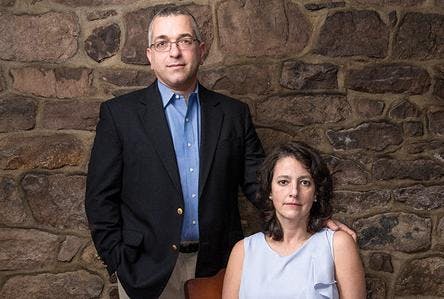Uterine Fibroid Power Morcellation
Power morcellation is a medical device procedure that involves inserting a spinning blade into the uterus through an incision. Morcellator devices are used to completely remove painful uterine fibroid tissue (myomectomy) or the entire uterus (hysterectomy).
Morcellators are meant to be “minimally invasive” when removing non-cancerous fibroid growths. Morcellators are used in an estimated 50,000 to 150,000 procedures annually.
About Amy Reed

Photo courtesy of Slay Sarcoma
Amy Reed is an anesthesiologist who underwent power morcellation to treat her uterine fibroid condition in Oct. 2013. Reed had the surgery at Brigham and Women’s Hospital in Boston, Massachusetts.
The hospital staff "standardized, reaffirmed, and formalized both the pre-operative work-up and the informed consent process, as well as the recommendations for eliminating the use of morcellation in certain groups, particularly in women over the age of 45," hospital spokeswoman Lori Schroth told USA Today in an email.
But as a member of the medical community, Reed never expected a minimally invasive procedure to lead to cancer. The cancer, known as leiomyosarcoma, had been released by the device when it disrupted the cells in Reed’s abdomen.
Reed's husband, cardiothoracic surgeon Hooman Noorchashm, has since worked alongside Reed to advocate against morcellator use. Her story led to a change in the policy and regulation of the device at Brigham and Women’s Hospital.
“We want the American College of Obstetricians and Gynecologists and the American Board of Obstetrics and Gynecology to change this ‘standard of care’ by ending the needless waste of life caused by spreading cancer with morcellation,” Noorchashm wrote in a Petition Ended petition.
The couple later founded the nonprofit Slay Sarcoma Research Initiative Inc. to raise awareness and fund research on leiomyosarcoma cancer. Reed’s outreach efforts have successfully raised concerns about the safety of power morcellation surgery, leading the FDA and other organizations to issue communications about the device.
High Risk Of Ovarian Cancer
Reed is one of thousands of women who have developed leiomyosarcoma cancer after power morcellation. The cancer is hidden within the fibroids, making it impossible to detect before the surgery.
The FDA found that 1 in 350 women are at risk of developing uterine cancer from power morcellation surgery. In 2014, the agency released a safety alert about the device.
“If laparoscopic power morcellation is performed in women with unsuspected uterine sarcoma, there is a risk that the procedure will spread the cancerous tissue within the abdomen and pelvis, significantly worsening the patient’s long-term survival,” the FDA wrote. “While the specific estimate of this risk may not be known with certainty, the FDA believes that the risk is higher than previously understood.”
“The FDA is warning against using laparoscopic power morcellators in the majority of women undergoing hysterectomy or myomectomy for uterine fibroids. Health care providers and patients should carefully consider available alternative treatment options for the removal of symptomatic uterine fibroids.”
Though the FDA warns against using laparoscopic power morcellators in the majority of fibroid removal procedures, the device has yet to receive an official ban.
Reed and her family work to ban the device and prevent others from developing cancer. For the thousands of women suffering from cancer side effects, resources are available.
